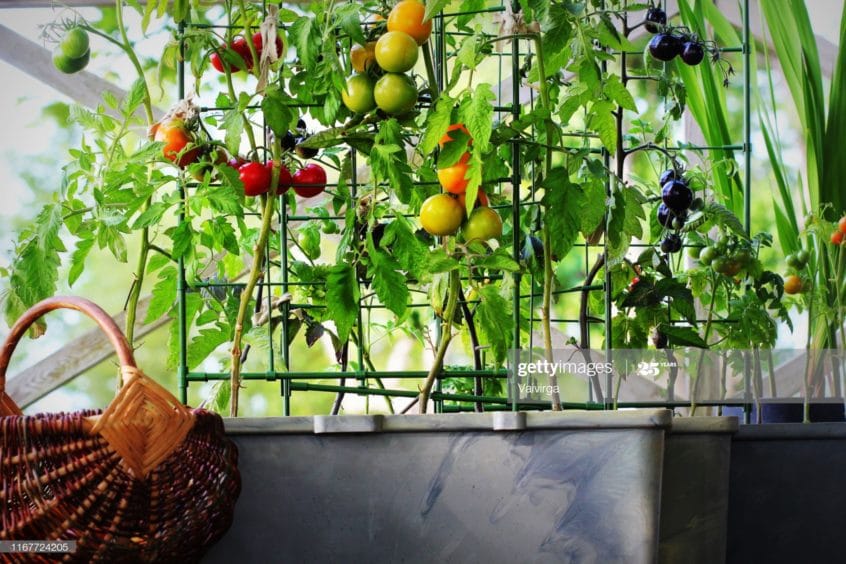Maybe you live in apartment or a location without a lot of green space or room to grow the large garden you imagined. That doesn’t mean that you have to give up on growing your own garden. Container gardening is a great alternative to traditional gardens. They are one of the simplest ways to grow your own plants and they don’t require a lot of space. They can easily be placed on a patio or balcony or just outside on a porch.
To start, choose a light coloured pot that is large enough to allow your plant to grow.
The roots will be bigger than you think so make sure to give lots of space. Plants that become root bound will not continue to grow. Before you fill the pot, make sure there is a way for water to get out, allowing for drainage so your plants don’t get too wet and die. This can be done by drilling a few small holes in the bottom of your planter to allow excess water to get out.
When preparing your container:
Before you can plant, you will need to choose a good potting soil for the container – if you are using soil from your garden, be aware Plain garden soil is too dense for container gardening and will likely contain more weeds. For containers up to 1 gallon in size, use a houseplant soil mixture. For larger containers, use a relatively coarse soilless planting mixture to maintain the needed water and air balance. Pre-moisten soil either by watering it before you fill containers or after you’ve filled the containers with soil by flooding with water several times and stirring. Be sure the soil is uniformly moist before planting.
When it comes to deciding which plants to put into your containers, almost any vegetable, herb, or flower can be grown. Make sure to consider how much sun or shade the container will receive.
To maintain your container garden:
Containers can dry out more easily than other types of gardens, so be sure to keep an eye on how much water it is getting or needs daily. Container garden plants need regular feeding. Fertilize them by watering with diluted fish emulsion, seaweed extract, or compost tea. Start by feeding once every two weeks and adjust the frequency depending on how your plant responds.
Limited on space? Try using the Vertical Garden Method.
A vertical garden is a one that grows upward (vertically) using a trellis or other support system, rather than on the ground (horizontally). Anything grown on a trellis or even a fence is technically part of a vertical garden.
When starting a vertical garden, be sure to anchor your vertical gardening structure in place before planting so the roots or stems are not disturbed. . Pair heavy or more demanding plants with sturdier structures. Plan where you will place your garden carefully, as tall plants or structures cast shadows on the vertical garden that can affect the growing patterns of nearby plants. Plants grow differently on a vertical garden. Some need to be physically attached to structures, while others are twining and will loop themselves around trellis openings. Plants grown in a vertical garden might need more frequent watering and fertilizing because they’re exposed to more light and wind than a traditional garden.
As you can see, gardens can be grown in a variety of ways based on the space you have available. Be creative and enjoy getting in the dirt no matter where you are!
Dig Deeper! (Get it?)
Backyard Gardens – raised bed or in-ground garden?
How Does Your Garden Grow? – basics of home gardening for food

